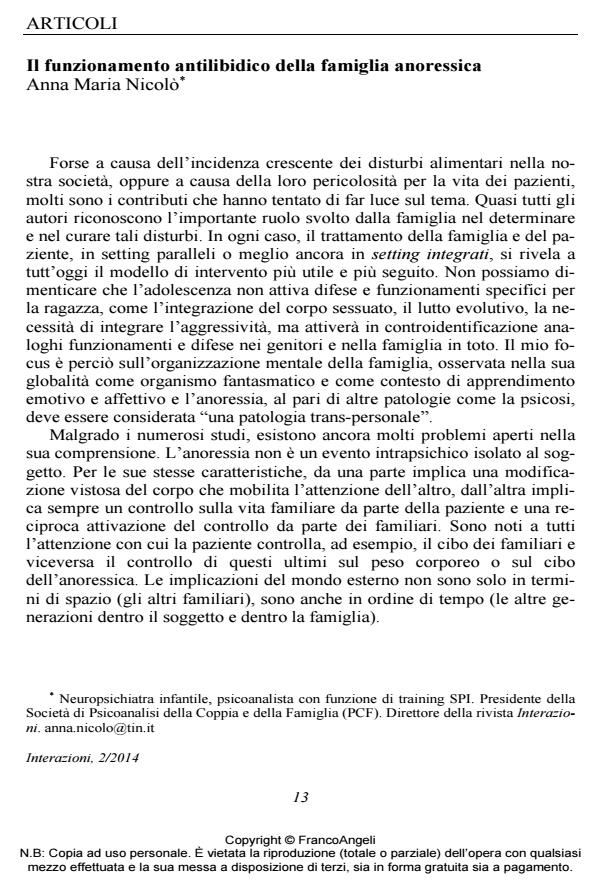The antilibidinal functioning of the family anorexic,
Journal title INTERAZIONI
Author/s Anna Maria Nicolò
Publishing Year 2015 Issue 2014/2
Language Italian Pages 9 P. 13-21 File size 42 KB
DOI 10.3280/INT2014-002002
DOI is like a bar code for intellectual property: to have more infomation
click here
Below, you can see the article first page
If you want to buy this article in PDF format, you can do it, following the instructions to buy download credits

FrancoAngeli is member of Publishers International Linking Association, Inc (PILA), a not-for-profit association which run the CrossRef service enabling links to and from online scholarly content.
The author suggests that, different psychopathological pictures and personality structures can be found under the name of anorexia. The author particularly discussed the important role of the family in determining and treating such disorders. The focus of the work is therefore placed on the organization of mind of the family, seen as a phantasmatic organism and a context for emotional and affective learning. Like other disorders such as psychosis, the author consider the anorexia as a "trans-personal pathology".
Keywords: Anorexia, anorexic family, antilibidinal functioning.
Anna Maria Nicolò, Il funzionamento antilibidico della famiglia anoressica in "INTERAZIONI" 2/2014, pp 13-21, DOI: 10.3280/INT2014-002002